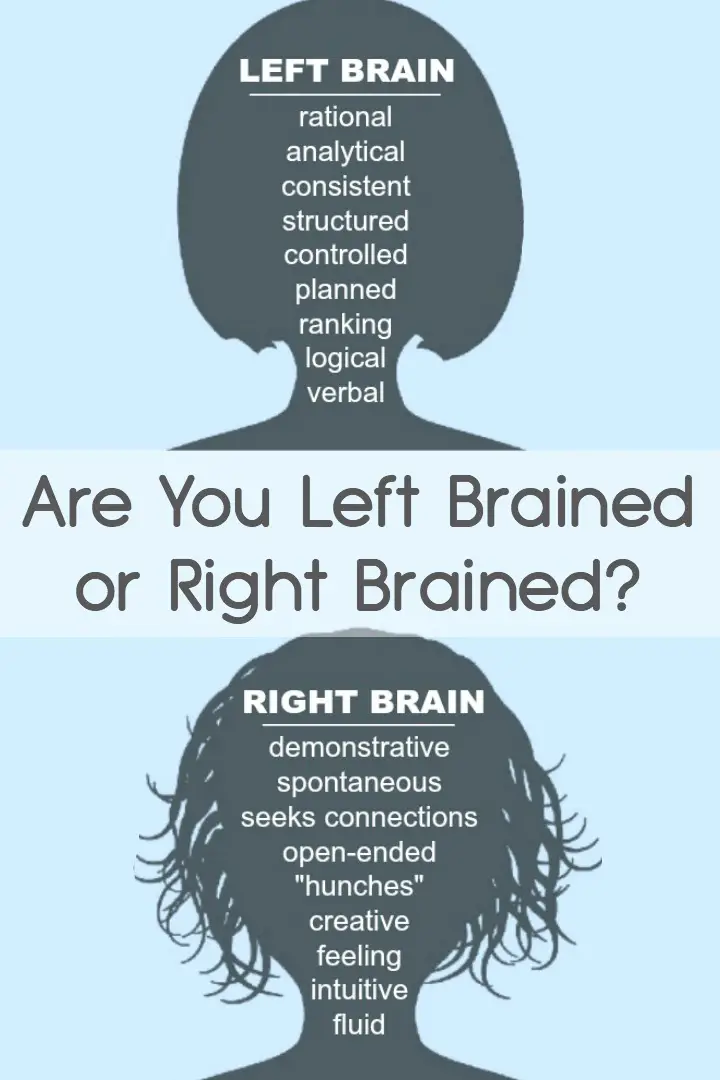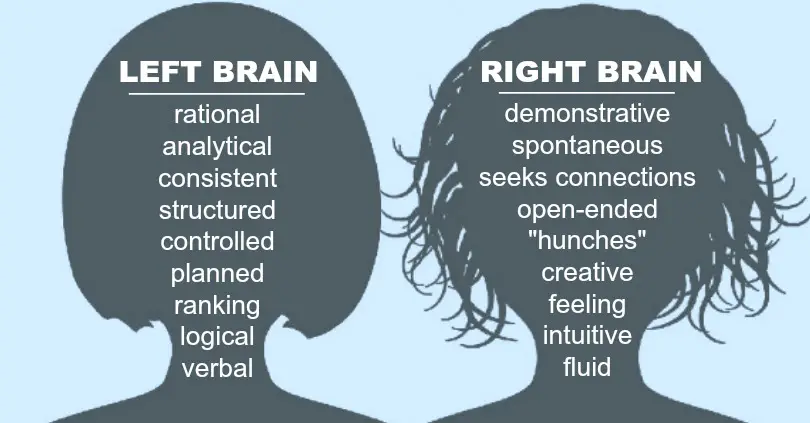Are You Left Brained or Right Brained?
You have already probably came across the terms “Left Brain or Right Brain,” and you must have also thought about what this implies in trying to characterize your own personal tendencies.
First and foremost, the human brain is sub-divided into two different/distinct hemispheres – the left brain hemisphere and the right brain hemisphere. These two different parts of the brain, the left and the right brains, also have different ways of processing thought. In each and every individual though, both sides of the brain work in tandem to help the person view and understand the world and his/her personal experience much better.
In this article, we will list down the prevailing characteristics of both the left and the right brains, so you can discover which part of your brain describes the most genuine “you” with regards to these ends of the spectrum. The truth is that each individual will fall into his/her own different place on this spectrum, although some people are mostly left-brained (meaning they utilize the left side of their brains more) while others, fundamentally, are right-brained.
Nonetheless, while some people are classified mostly to one or the other type of dominant brain hemisphere, some people, still, can be characterized as having an equal balance of these two brain hemispheres.
With a clear understanding of whether you are dominantly left-brained or right-brained, you may also learn more about how you typically process information as well as become more aware of how you interact with people, things, or events happening in your life.
 The Left Brain
The Left Brain
Our left brain is characterized mainly by “verbal/word skills” and “logical thinking.”
Individuals who are said to be left brain dominant are more “sequential” and “rational.” A person with a dominant left brain is inclined to gain understanding of a situation by rationally or logically sequencing pieces or individual events together or by basing their thinking on individual pieces that make up a whole situation.
This is entirely the opposite of a person who is right brain dominant who tends to process his/her thoughts by viewing the situation through instincts and visual pictures as well as by observing things in a more global/holistic perspective before even trying to analyze the minute details thereafter.
The following are some key traits of a Left-brained individual:
- Responds well to verbal instructions/ guidelines
- Handle issues or solves problems by analyzing by reason – and looking sequentially at the different parts of things
- Understands information by consistently and successively considering each component of things
- Analyzes differences in things
- Prefers definite and established information
- Is structured and planned
- Prefers ranked authority types of structures
- Prefers multiple choice questions/ tests
- More comfortable with words whether through speech/talking and writing
- Has a distinct ability to controls his/her feelings
The Right Brain
Individuals who are said to be right brain dominant tend to be more “simultaneous” and “intuitive” as opposed to left brain individuals who are more sequential and logical.
To help differentiate the more dominantly right-brained individual from a more dominantly left-brained one, here is an example: either one type will have a different way of describing directions to a certain location…
A right-brained individual will more likely to give you this kind of instructions or directions: “Follow Road 15 until you get past the mini-mart and shopping mall on your right side. Next, you will pass through two traffic lights and then see a blue office building on your left side—that’s Sycamore Street. Turn in that spot then go a couple of blocks more till you reach a gas station with a yellow and white sign with bold red letters. Turn left from there to Church Street and go to the second house on your left, the green one with white shades.” – A right brain person will give you this kind of visual image description to help vividly guide you to your destination.
On the other hand, a left-brained individual will more likely tell you these kind of directions: “Go eastward for 2.3 miles on Road 15, and then go south to Sycamore Street for three blocks. Next, turn west on Church Street and stop at the second house on your left.”— A left brain person will definitely give you this kind of detailed and factual information, which will be a great descriptive direction for another left brain person.
The following are some key traits of a Right-brained individual:
- Responds well to demonstrative/visual/vivid instructions
- Is spontaneous and more fluid
- Attracted to elusive or uncertain information
- Settles issues with their “hunches” and in accordance to revealed patterns or configurations
- Lumps things together according to essential connectedness
- Sees likenesses or correspondences
- Analyzes similarities
- Comfortable with or prefers collegial-type of power/ authority structures
- Prefers open ended questions
- At ease with drawing and/or manipulating things
- Free with expressing feelings and emotions
Benefits of Understanding The Left Brain and The Right Brain
The truth to all these matters is that every person needs to utilize both his left and right sides of the brain (each working with one another) in order to come up with the most accurate kind of mental processing or best thinking skills.
We can credit the development of these distinctive differences between the two brain hemispheres to the studies of Dr. Roger Sperry, a psychobiologist, who carried out extensive research on the subject during the 1960’s. Because of his findings and discoveries, he had been awarded in 1981 the honors of a Nobel Prize; and now, we can use these information to help us know not just our weaknesses in certain areas/aspects for growth, but also help us determine which areas in our lives or in which types of profession we may excel in with our innate capacities.
The main benefit of understanding which part of our brain is more dominant will assist us as well as empower us in developing some of our weaker processing styles – those that are not too characteristic of ourselves. Of course, we don’t have to feel inferior about these qualities that we may not be excelling in, but rather, by being simply aware of them, it can help us more in dealing with our daily interactions.
In any case, even if there are uniquely awesome qualities for each type of left and right brain hemispheres, knowing which traits you can develop more, as well as being aware of the activities you can do to help train the other (less developed hemisphere) of your brain, will provide you great assistance if you want to live a better, more fulfilled and well-balanced life.
